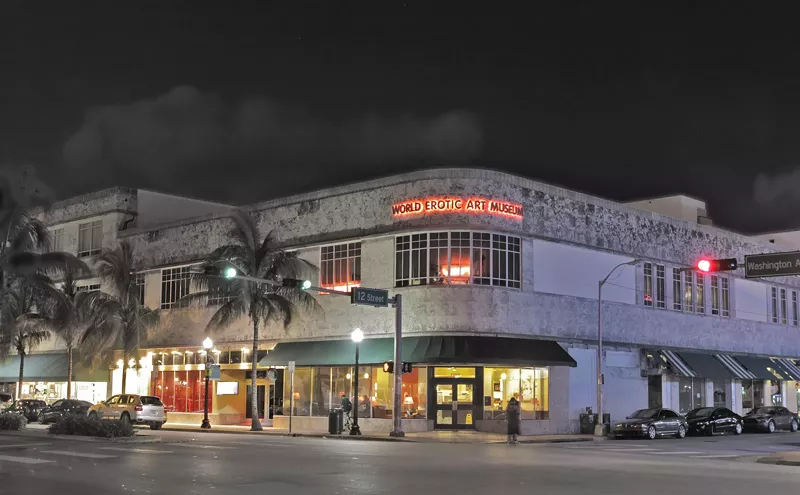All we know for sure is that it's artist Carlos Betancourt's latest creation. And if you want more than that, you must visit the Beach yourself, because Betancourt won't reveal exactly what he's up to. That would spoil the fun. "Basically my work is about mysteries," he says. "This is sort of like a puzzle that people need to resolve."
C'mon, how about a hint? "I could, if I wanted to, tell you something about it," he teases. "But I won't. I don't want to limit your experience. Besides, I'm not even sure what it means."
Betancourt's seaside enigma will stand for one day and night before being moved to a permanent home -- sponsors aren't sure where yet -- on Miami Beach. Accompanying the exhibition will be readings by three prominent local poets: Campbell McGrath, winner of a MacArthur "genius grant" and creative-writing professor at Florida International University; Fred D'Aguiar, creative-writing professor at the University of Miami; and Richard Blanco, author of the critically acclaimed City of a Hundred Fires.
The readings and the exhibition called The Sounds, Symbols Project revolve around a tribal mythology motif. Betancourt, who has visited the Miami Circle as well as similar archaeological digs in Puerto Rico and Mexico, works with primitive symbols in much of his work but has never attempted anything on the scale of the Beach installation, a 300-by-125-foot behemoth. Organizers are touting the slabs of wood as the most ambitious environmental exhibition in Miami since 1983, when conceptual artist Christo draped a chain of islands in Biscayne Bay with shocking-pink plastic.
With the help of volunteers, Betancourt is arranging 2500 individually sculpted wooden icons, some as tall as five feet. Many are recognizable, like a cloud-shape cluster of mounds shooting down vertical lines, a symbol for rain used by the Native-American Hopi tribe. Others are more abstract, like a series of concentric circles that represent royalty in some West African languages.
But whatever this strange alphabet soup spells out on the sand, the work also says something about the power of the skies above. It celebrates the marriage of two cosmic events: March 19 is the vernal equinox, when conditions are just right for day and night to be of equal length; and a nearly full moon will be bathing the entire scene in its soft glow.
The sun also figures into the celestial theme. As it arcs across the sky over the course of the day, the shadows cast by the icons will shift, gradually morphing the installation. "This piece is being controlled mostly by nature, not by me," Betancourt notes.
Watching shadows move can get boring pretty quickly, though, so make sure you catch the poetry readings between 5:30 and 6:30 p.m. For Campbell McGrath, who calls Betancourt's piece a "South Florida Stonehenge," the project belongs to a long tradition of blending poetry with other artistic media. "It's not poetry and visual arts just adding up, but also speaking to each other," he explains. "One plus one equals three.... There's an extra energy and chemistry."
McGrath probably will read from his as yet unpublished Florida Poem, a long work that attempts to give the state, a place populated by nomads, a mythological identity. Like the tribal symbols in Betancourt's installation, the poem recovers the past. "We have to understand that all this started with some guy hunting mastodons out here," he says. "Now it's come all the way to Jet Skis and blimps. You have to hold all that in your mind's eye, and you can do that when you're on the beach, looking at the ocean."












